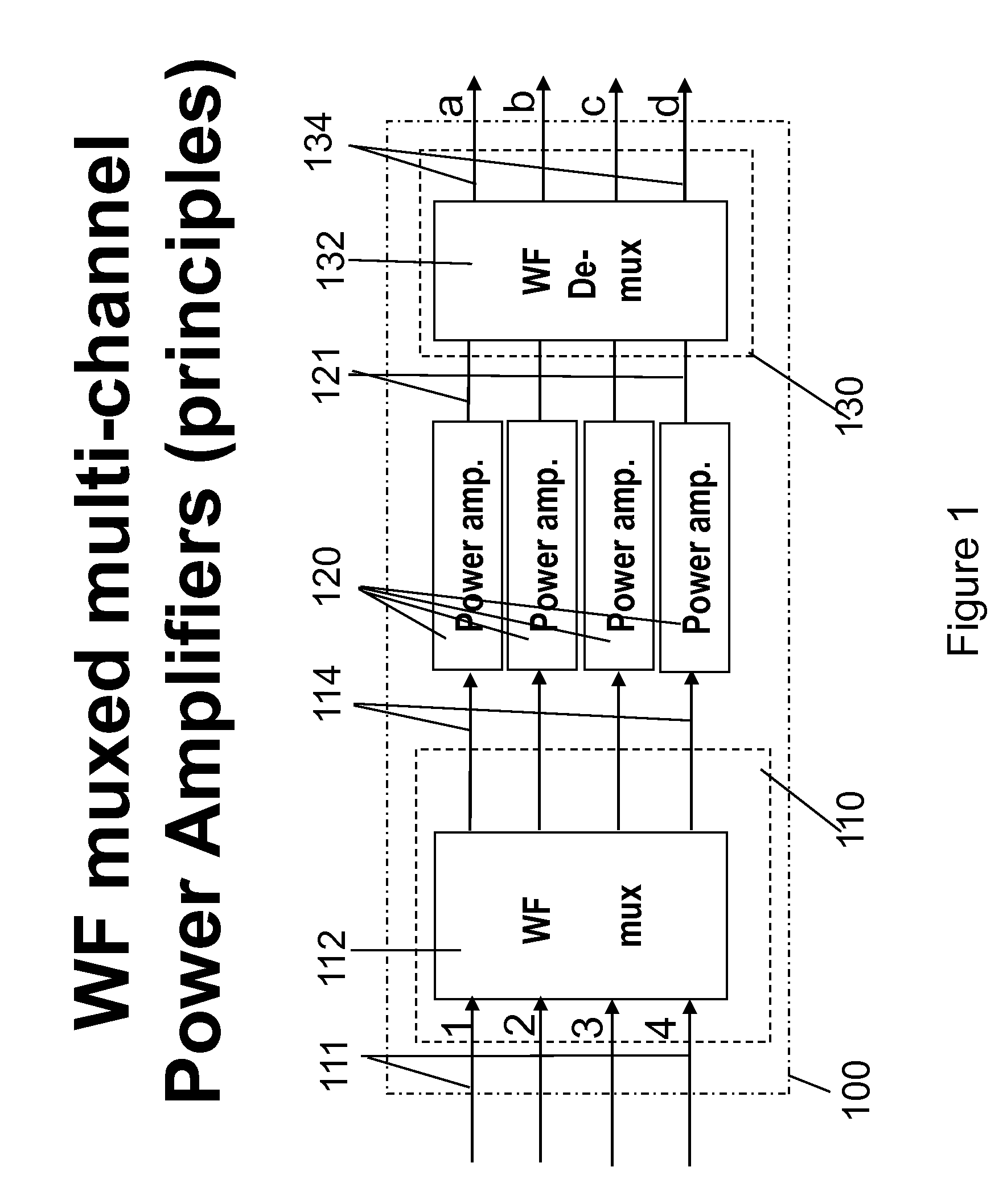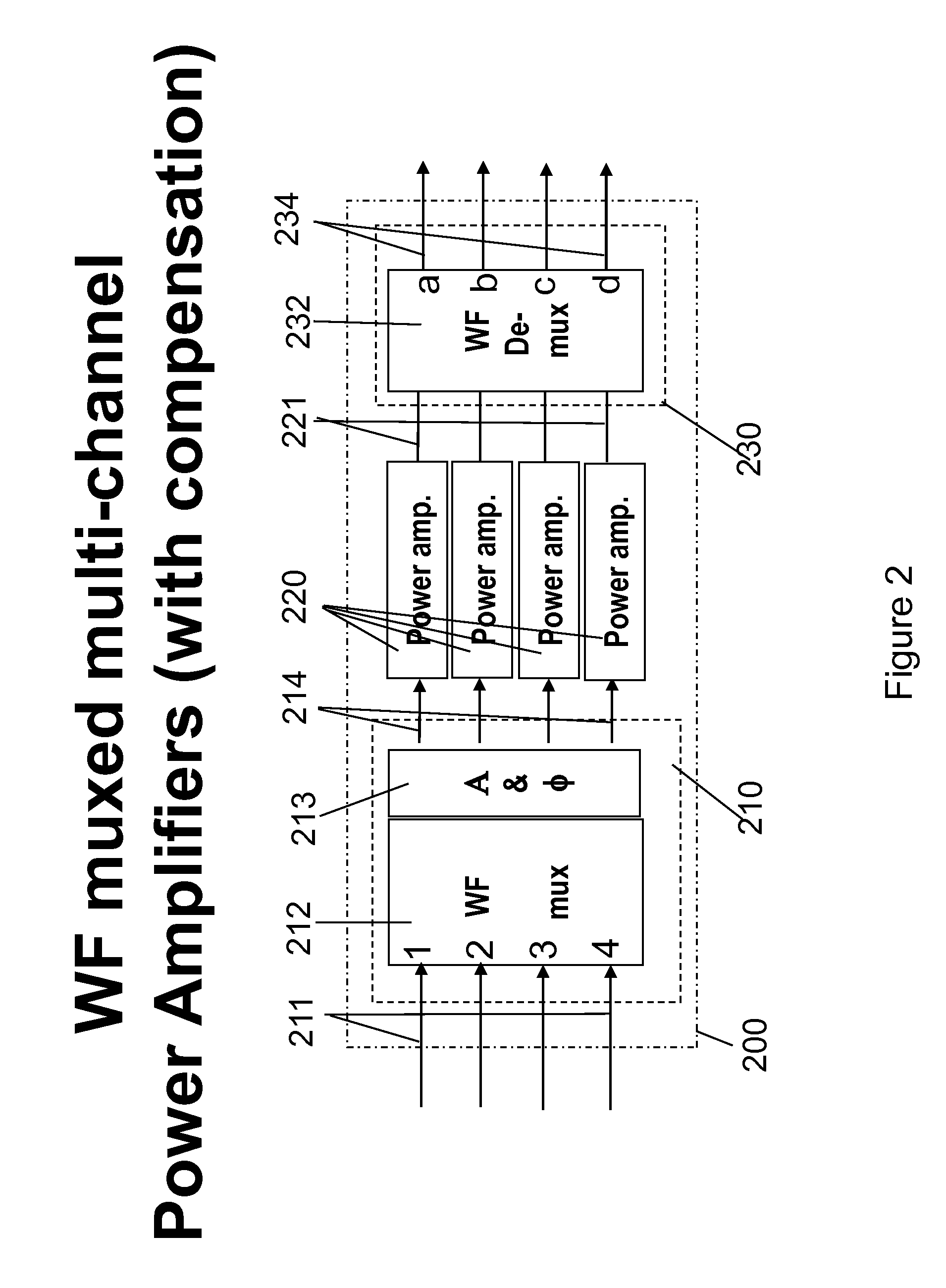Flexible multi-channel amplifiers via wavefront muxing techniques
a multi-channel amplifier and wavefront technology, applied in the direction of amplifier combinations, gated amplifiers, transmission, etc., can solve problems such as limiting flexibility, and achieve the effect of more flexibility and efficient operation
- Summary
- Abstract
- Description
- Claims
- Application Information
AI Technical Summary
Benefits of technology
Problems solved by technology
Method used
Image
Examples
Embodiment Construction
[0035]FIG. 1100 depicts a simplified block diagram of a bank of 4 RF power amplifiers (PAs) 120 interconnected with RF pre-processor 110 and RF post-processor 130. Pre-processor 110 consists of 4-to-4 wavefront (WF) multiplexer (muxer) 112, and post-processor 130 consists of 4-to-4 WF de-multiplexer (demuxer) 132. Inputs 111 to WF muxer 112 are indicated as ports 1, 2, 3, and 4, respectively. Outputs 114 are connected to the 4 individual inputs 120 individually. Outputs 121 of PAs 120 become the inputs to 4-to-4 WF demux processor 132. Outputs 134 from WF demuxer 132 are depicted as ports a, b, c, and d, respectively.
[0036]The WF muxing / demuxing process feature N parallel propagation paths for M concurrently propagating waves from a source location to a destination. Each wave carries a communications signal stream. As a result of WF mux processing, each propagating wave with its signal stream appears in all (N) parallel paths with unique propagating wavefront (WF) at the destination...
PUM
 Login to View More
Login to View More Abstract
Description
Claims
Application Information
 Login to View More
Login to View More - R&D
- Intellectual Property
- Life Sciences
- Materials
- Tech Scout
- Unparalleled Data Quality
- Higher Quality Content
- 60% Fewer Hallucinations
Browse by: Latest US Patents, China's latest patents, Technical Efficacy Thesaurus, Application Domain, Technology Topic, Popular Technical Reports.
© 2025 PatSnap. All rights reserved.Legal|Privacy policy|Modern Slavery Act Transparency Statement|Sitemap|About US| Contact US: help@patsnap.com



